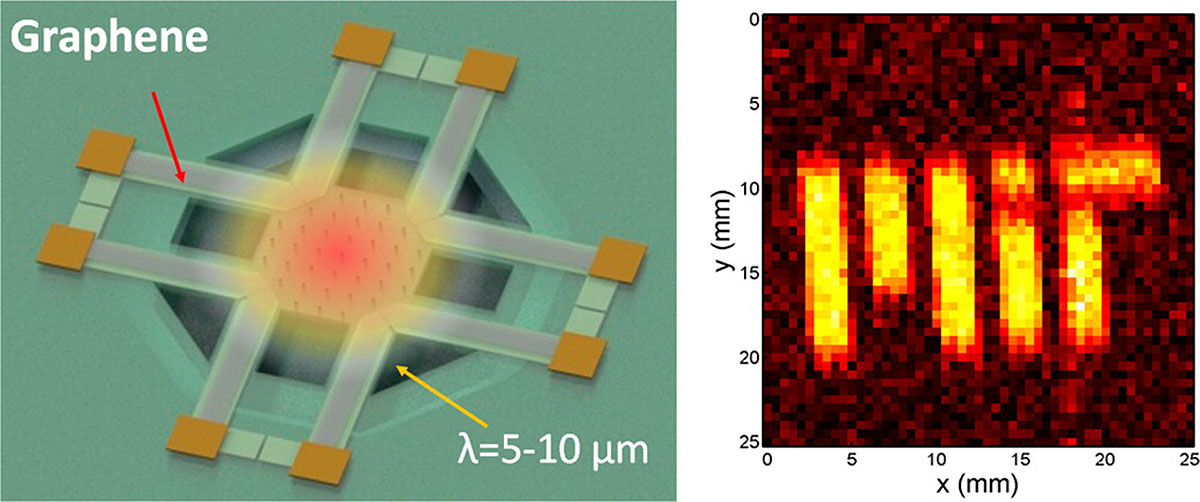MIT Researchers Built a Chip That Could Bring Night Vision to Cars, Phones New graphene-based sensors could one day be integrated into car windshields and other everyday products.
By Steve Dent
This story originally appeared on Engadget

Thermal imaging devices like night-vision goggles can help police, search-and-rescue teams and soldiers to pick out bad guys or victims through walls or in complete darkness. However, the best devices require cryogenic cooling, making them heavy, expensive and slow.
Enter graphene, the semi-conducting material that's 100 times stronger than steel -- researchers from MIT have built a chip out of the material that may solve the problem. The resulting infrared sensors were small enough that they could be "integrated in every cellphone and every laptop," according to the study's co-author, Tomas Palacios.
Graphene is one of the best-known infrared sensing materials, so the team built a microscopic sensor chip out of the material. Further graphene was then used to carry the signals and suspend the chip over an air pocket. That eliminated the need for external cooling, normally required by such devices to separate internal heat from the target's infrared signature.

As shown above, the compact sensor was able to detect the shape of a human hand, a promising first result. The goal is to further improve the resolution, so the tech can be used in everyday devices. For example, Palacios told LiveScience that the sensors could one day be integrated into car windshields, giving you "night-vision systems in real time without blocking a driver's regular view of the road." That said, we're still waiting for a host of "promising" graphene-based technology to actually become usable products.










